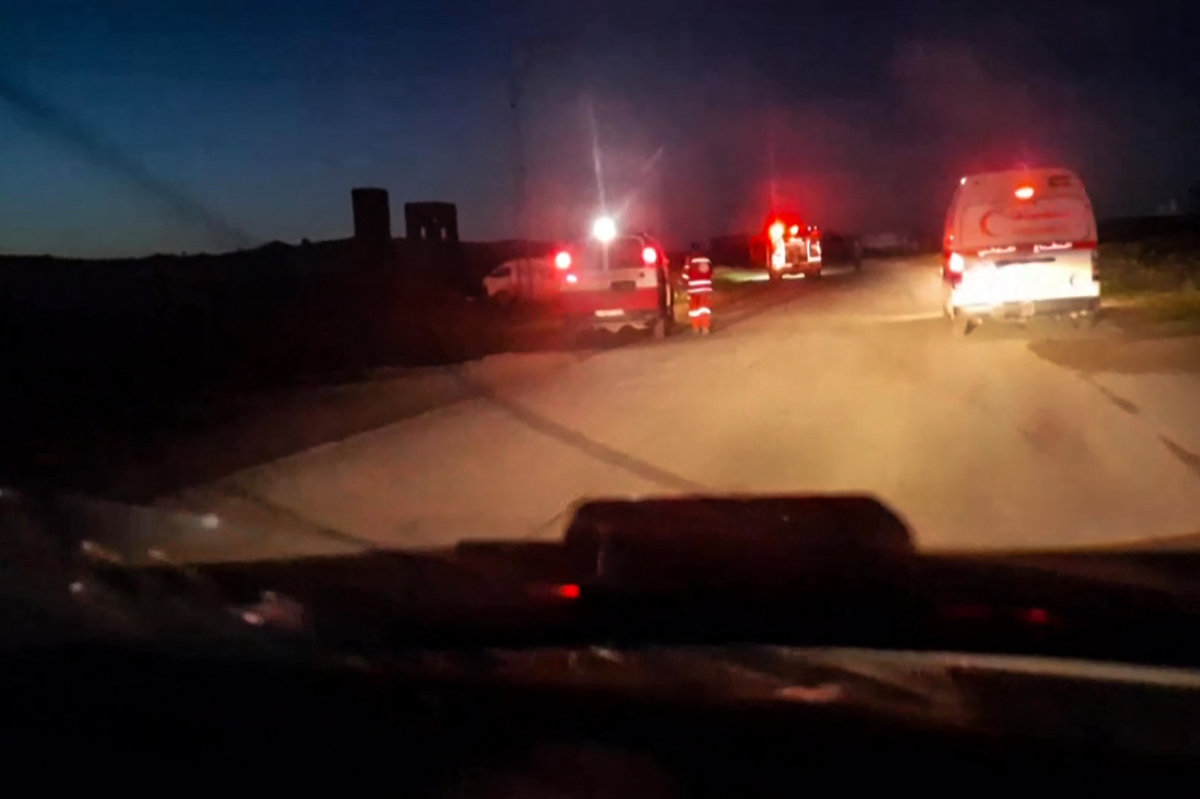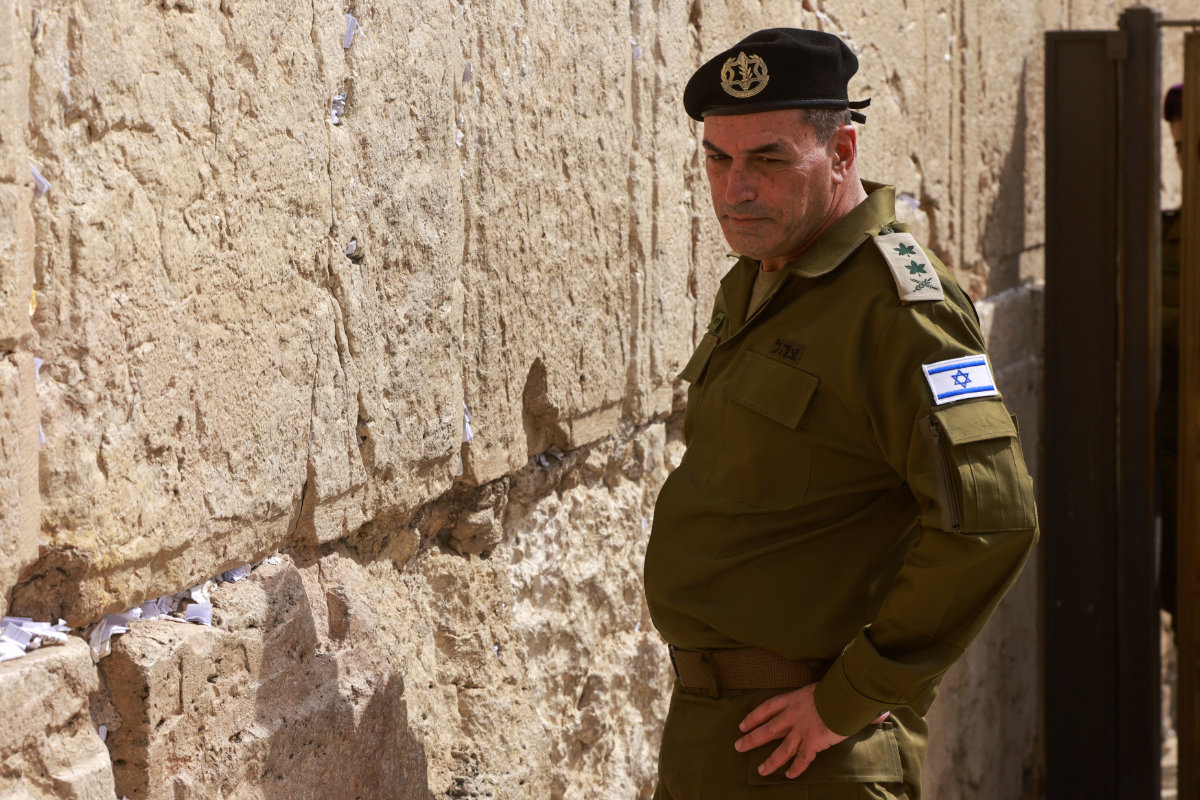NEW YORK CITY: The UN’s High Commissioner for Human Rights on Thursday expressed deep outrage over the killing of 15 medical and aid workers in Gaza on March 23, as he warned that “there is a high and increasing risk that atrocity crimes are being committed in the Occupied Palestinian Territory.”
Volker Turk called for an “independent, prompt and thorough” investigation into the deaths which, he said, raise “further concerns over the commission of war crimes by the Israeli military.” The perpetrators “must be held to account,” he added.
He was speaking during an emergency meeting of the Security Council requested by council member Algeria, supported by China, Pakistan, Russia and Somalia, to discuss the escalating violence in the territory.
Renewed Israeli military attacks on Gaza have killed more than 1,200 Palestinians since March 1, including at least 320 children, Turk said, adding that the situation has deteriorated after the brief respite provided by the ceasefire earlier in the year
“The temporary relief of the ceasefire has been shattered,” he continued, noting that ongoing Israeli airstrikes have targeted residential buildings, hospitals and schools, many of them sheltering displaced civilians.
“There was no let-up, even as Palestinian families celebrated Eid,” Turk told council members. The Israeli military has intensified its strikes on “camps for people who have been displaced numerous times.” This has displacing thousands of additional Palestinians “who have nowhere safe to go,” he said, as half of Gaza has been designated a no-go zone or placed under evacuation orders.
These actions, he added, violate international humanitarian law, particularly with regard to the protection of civilians during conflicts.
Turk also highlighted the worsening humanitarian situation as a result of the blockade imposed on Gaza by Israeli authorities since March 1, which has cut off vital supplies of food, medicine and fuel. The World Food Program has been forced to close 25 bakeries, he said, exacerbating the food crisis.
“Community tensions over food shortages are palpable, alongside reports of excessive use of force by local police,” he continued. “We are witnessing a return to the breakdown of social order that preceded the ceasefire.”
The blockade amounts to collective punishment of Palestinians and might amount to the international crime of using starvation as a weapon of war, Turk said.
The situation is equally catastrophic in the West Bank, he warned, where Israeli military operations have resulted in hundreds of deaths and the destruction of refugee camps. Since Oct. 7, 2023, more 900 Palestinians have been killed there, including 191 children and five people with disabilities, and 40,000 have been displaced amid an alarming increase in state and settler violence. Some of these deaths, Turk said, might amount to extrajudicial “and other unlawful killings.”
In addition, he warned that “the announcement that residents must not return to their homes for a year raises serious concerns about long-term mass displacement.”
Turk expressed alarm at what he described as inflammatory rhetoric from senior Israeli officials, including calls for the annexation of Gaza and the forcible transfer of Palestinians from the territory. He said this raises grave concerns about the risk of international crimes and runs counter to the fundamental principle of international law that prevents the acquisition of territory by force.
“Dozens of Palestinian herding and farming communities have been forced to leave their homes and their ancestral lands, while restrictions on movement have paralyzed the economy and are shredding the social fabric,” Turk said.
Events during the past 18 months have made it “abundantly clear” that there is no military solution to the conflict between Israel and Hamas, he added. He called for a political resolution and reiterated that the only path forward is a negotiated two-state solution in line with UN resolutions and international law.
Turk urged the Security Council to prioritize the protection of civilians and ensure accountability for all violations of human rights law. He also demanded the immediate and unconditional release of all hostages and detainees, as well as unrestricted humanitarian access to Gaza.
The UK’s ambassador to the UN, Barbara Woodward, said her country “strongly opposes Israel’s decision to resume and expand its military operations in Gaza. Further fighting and bloodshed is in nobody’s interest and takes us further away from a deal to get the hostages home.”
She urged Israeli authorities to immediately reinstate the flow of humanitarian aid into Gaza.
“Blocking supplies and electricity from entering Gaza risks violating international humanitarian law,” she said.
The UK also condemns remarks by Defense Minister Israel Katz about the annexation of land in Gaza, Woodward added, and recent Israeli decisions to accelerate the establishment of settlements and outposts in the West Bank.
“There must be no forced displacement of Palestinians or reduction in the territory of Gaza,” she said.
Dorothy Shea, the charge d’affaires at the US mission to the UN, said Hamas was “solely responsible for the resumption of hostilities since March 18, refusing time and again to accept proposals to extend the ceasefire.
“For too long, Hamas has abused civilian infrastructure and facilities, cynically using it to physically shield its personnel and weaponry. Hamas’ reckless and contemptuous behavior has put civilians and humanitarian personnel at risk, purposefully placing them in the crossfire.”
Addressing events in the West Bank, Shea said that Washington supports what she described as “the efforts of the Israel Defense Forces to root out violent extremists in Jenin and Tulkarm.”
She called on the Palestinian Authority to carry through on its pledge “to end the practice of offering cash payments to the families of those who have carried out terrorist attacks, which for far too long incentivized violence against Israeli civilians and set back the prospects of peace.”
Slovenian envoy Samuel Zbogar lamented “the erosion of humanity, the erosion of protection of civilians, of respect for international law (and) of peace and security.”
He added: “More war does not bring more peace; not to Israel, not to Palestine, not to the region nor the globe. With each passing day, the region is less secure and the future is more unstable.”
He called on Israeli authorities to halt their operations in Gaza and the West Bank, and for an end to attacks on Israel.
“We call on Israel and Hamas to return to the agreement made in line with Resolution 2735, with the support of Egypt, Qatar and the United States,” Zbogar said. “The ceasefire must be restored, hostages must be released, aid must flow and dialogue must prevail.
“The only path to lasting peace can be the one of diplomacy. The only solution for ensuring lasting peace is the two-state solution endorsed by this council.”



































